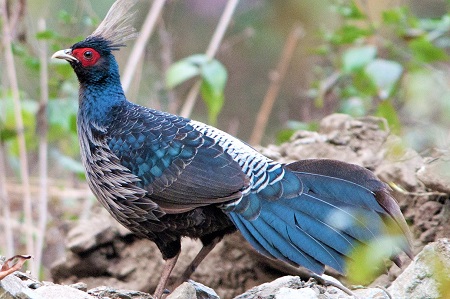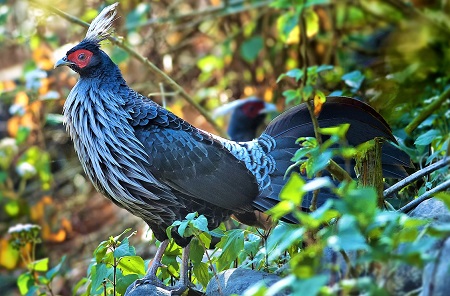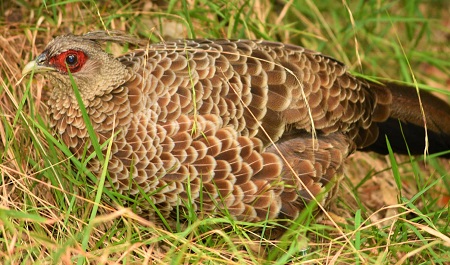Kalij Pheasant
The Kalij Pheasant is a Pheasant species inhabits forests and thickets (especially the Himalayan foothills from Pakistan to western Thailand). It’s closely related to the Silver Pheasant and the two are known to hybridize. There are nine recognized subspecies for the Kalij pheasant that can be divided into two main groups. The first group inhabits the western and central parts of the species’ distribution range, while the second group inhabits the eastern parts.
Male Kalij pheasants of the first group have glossy blue-black plumage with white to the rump or the underparts. While in the second group, the underparts and crest are glossy blue-black, but the tail and the upperparts are white with most feathers densely vermiculated with black. The female Kalij pheasant has a stunning plumage that shows different shades of brown depending on the subspecies. In some subspecies, the underparts are distinctly marked in whitish and black, while in others most feathers are pale-edged, resulting in a beautiful scaly appearance. Both sexes of the Kalij pheasant have a bare red face and greyish legs. The latter trait separates these birds from the red-legged Silver pheasant.
After mating (generally in mid-April), the female Kalij pheasant lays 6 – 9 eggs and incubates them for 22 days. As other pheasant species, the female is solely responsible for the incubation and rearing of the chicks.
| Place of origin | Pakistan, India, Nepal, Bhutan, Myanmar and Thailand |
| Use | Ornamental and preservation |
| Weight | Male: 795 – 1150 g female: 564 – 1025 g |
| Egg color | Creamy-white to reddish-buff |




